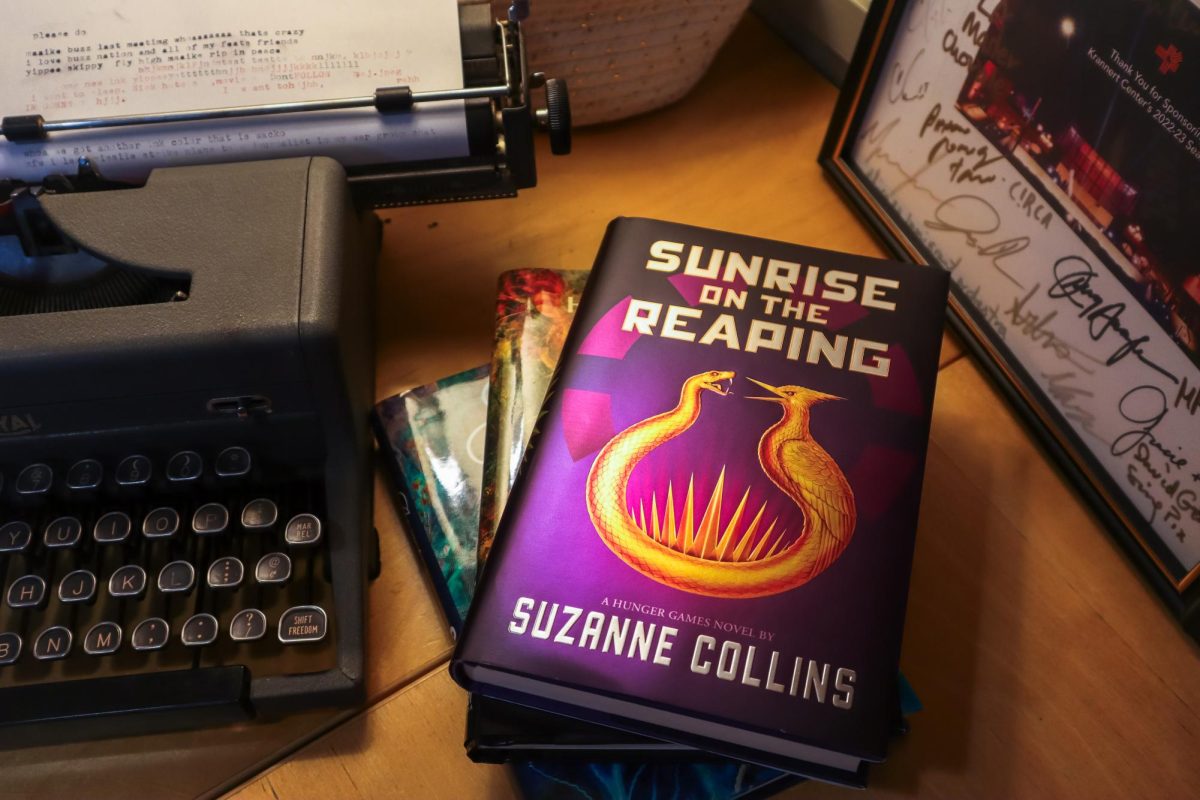Rating: 9/10
One of the most striking parts of John Green’s newest novel, “Everything Is Tuberculosis,” comes as a quote in chapter nine.
“Biology has no moral compass,” Green writes. “It does not punish the evil and reward the good. It doesn’t even know about evil and good.”
And yet, Green details the myriad ways in which societies attribute diseases like tuberculosis to human concepts like race, beauty and poverty — all of which perpetuate the idea that, “Everything is Tuberculosis.”
Get The Daily Illini in your inbox!
Published on March 18, the short but impactful novel combines a detailed human history of TB with Green’s experience with Henry, a TB patient in Sierra Leone.
The novel masterfully intertwines these threads, weaving together the outlook of the past with the effects of the present. Henry’s story is mirrored by past opinions of the disease and their involvement in shaping how we care for it today.
Although the disease has been around for much of human history, TB still has a profound impact on our health. TB is the leading cause of death from a single infectious agent, more than any other virus or bacterium. It was dethroned for a few years by the COVID-19 pandemic before returning to its claim.
Green doesn’t just state this fact, however. He tears into its moral implications for a society that is, in theory, advanced enough to eliminate these preventable diseases.
“TB in the twenty-first century is really caused by those social determinants of health, which at their core are about human-built systems for extracting and allocating resources,” Green writes. “The real cause of contemporary tuberculosis is, for lack of a better term, us.”
This statement isn’t just presented — it’s proven through a number of stories and evidence, all of which point to a societal impact that limits how we treat those with diseases.
The historical perspective of TB is mostly presented chronologically but still manages to gather a large variety of viewpoints from around the globe. Green presents a deep understanding of how our knowledge of the disease can often be one-sided.
One such example is presented within the context of the post-Civil War United States, where white scientists created ranges of theories for TB. Some even believed that Black people were getting sicker because of too much freedom after slavery.
“How might the contemporary story of tuberculosis be different had we listened to African American physicians like Dr. A. Wilberforce Williams, who noted over a century ago that the real cause of TB was not race but ‘poverty, bad housing, bad sanitation, bad working conditions, long hours, high rent, (and) poor food’?” Green writes.
The only unfortunate part of these explorations is that there aren’t enough of them. The book, at 208 pages long, speeds through the exposition to make room for Henry’s story. It was the best balance possible, but more about TB’s history and scientific nature would be a welcome addition.
Recent events are really what make the book a must-read for anyone looking into the public health field. Green speaks of Henry’s journey as one of the first patients in Sierra Leone to receive a special cocktail of medications for his drug-resistant TB. Henry was also supported by his doctor, Girum Tefera, and his mother, Isatu.
It’s a deeply touching story that makes the reader understand the pain that chronic illnesses can take on families, especially in countries where healthcare simply isn’t as available.
It’s impossible not to read about the difficulties in obtaining treatment for TB in certain countries and not be reminded of USAID, which has had cuts made to its foreign aid programs that provide medicine to impoverished countries.
Henry’s success is no longer a story of hope. Now, itʼs a tale of caution. There may be no more Henrys without the support of global organizations that seek to enrich public health everywhere.
Green released “Everything Is Tuberculosis” at the perfect time. It is a holistic review of both TB’s past and present. It is the story of Henry and his life with TB in Sierra Leone. But most importantly, it is a recommendation for the human race — stop leaving people behind.
“This is the story of human history as I understand it—the story of an organism that can do so much, but cannot do what it most wants,” Green writes.







